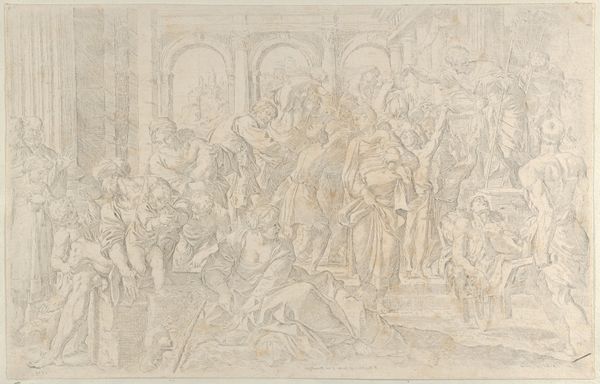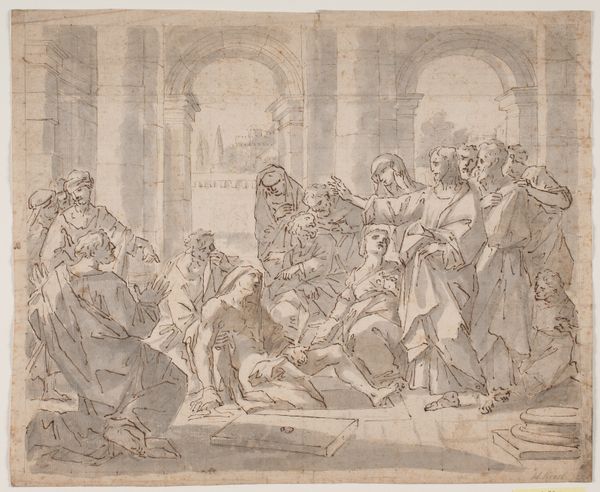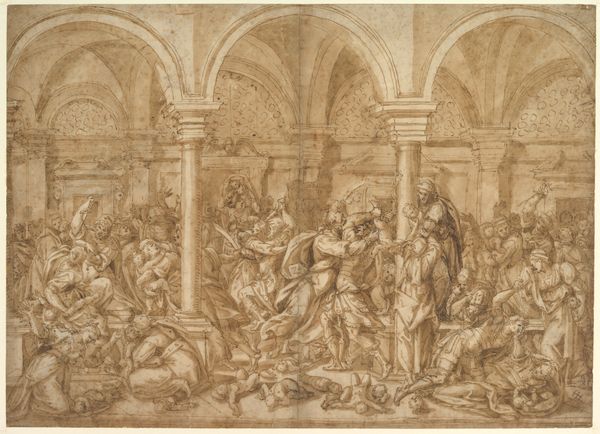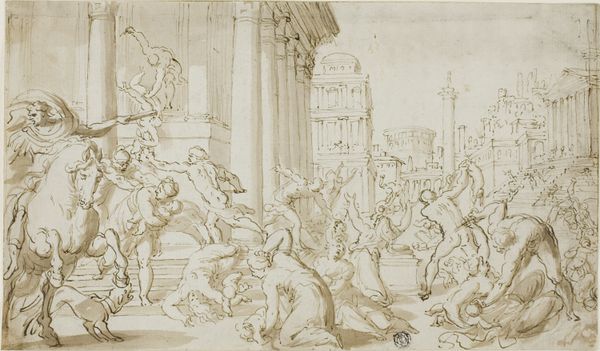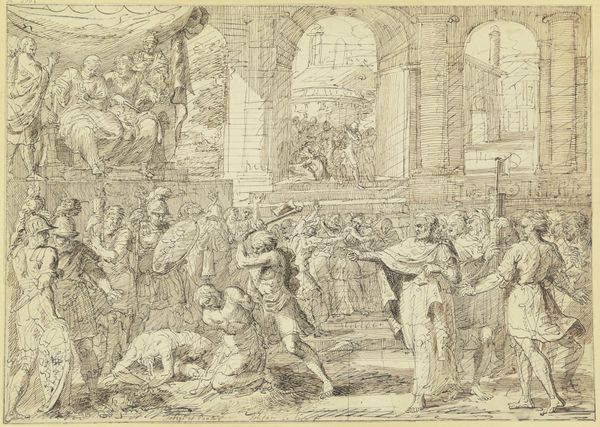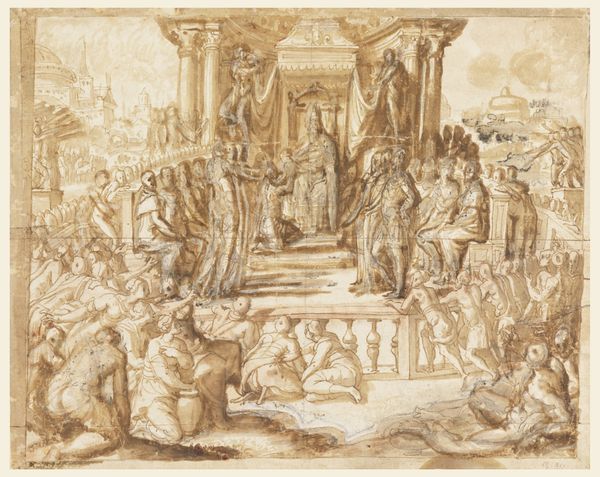
The Entrance of Charlemagne into Pavia 1840
0:00
0:00
drawing, print, pencil, charcoal
#
drawing
# print
#
charcoal drawing
#
soldier
#
romanticism
#
pencil
#
horse
#
men
#
charcoal
#
history-painting
Dimensions: sheet: 18 1/4 x 25 3/4 in. (46.3 x 65.4 cm)
Copyright: Public Domain
Curator: Here we see Julius Schnorr von Carolsfeld’s "The Entrance of Charlemagne into Pavia," created around 1840, a work currently residing here at the Metropolitan Museum of Art. He rendered it with pencil, charcoal, and some use of pen too. Editor: The scene feels incredibly dense. Look at that mass of bodies – so many struggling figures! It immediately reads to me as a depiction of the violence inherent in the consolidation of power, even though the architecture suggests some sort of Roman-era triumph. Curator: Exactly. It's potent with symbolism. The ruined Roman arches, a backdrop to Charlemagne's entry, whisper of the ebb and flow of empires. His triumphant entrance also signifies a 'renovatio imperii', an echo of Rome. Pavia itself was key, becoming Charlemagne's capital in the Kingdom of Italy. Editor: But is it truly triumphal if it requires crushing so many figures? Notice the women huddled to the side, the fallen soldiers under the hooves of horses… These details undermine any clean narrative of the march of progress or, indeed, a divine right to rule. What does 'Charlemagne' even *mean* as a symbolic figure today? Curator: Ah, but those motifs tie in: The horse is a longstanding symbol for status, war, and conquering power! I read these motifs as signaling that Charlemagne brings the rightful divine order to this city! Editor: Or a symbol for the ruthless application of power by a white supremacist power structure. It would be so useful to consider what communities existed in Pavia at the time and how this artwork celebrates cultural destruction of non-Christian belief systems. Curator: Well, the artist did work with the cultural memory he had access to; history painting after all had the ability to evoke grand ideas of patriotism. Editor: I’d also want to question this depiction of "history," who this piece served in the 19th Century and who benefits today from its imagery of white, male dominance riding triumphantly roughshod over the vulnerable. Curator: Even given the polemics around Charlemagne, however, this artwork itself seems to reveal the artist's contemplation on cycles of empires. Its detailed architectural depiction and crowded composition also demonstrate that Schnorr van Carolsfeld thought long and hard on the piece. Editor: Yes, and maybe looking more deeply will make more space for the perspectives erased in this portrayal of historical "triumph.”
Comments
No comments
Be the first to comment and join the conversation on the ultimate creative platform.


